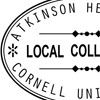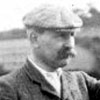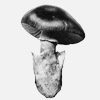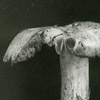George F. Atkinson (1854–1918) was a pioneering mycologist and botanist at Cornell University in the early twentieth century. Here you can learn about his life and his many contributions to science.
During his time as a Professor of Botany at Cornell, Atkinson's ideas improved understanding and naming of fungi. His methods of documentation and rigorous scientific photography influenced generations of mycologists. No fewer than 25 fungi have been named after him, and he himself described almost 300 fungal taxa, including the North American destroying angel, Amanita bisporigera.
Professor Atkinson's fungus collections are now part of the Cornell Plant Pathology Herbarium (CUP), an international collection of preserved fungi and plant disease specimens. In addition to tens of thousands of dried fungi, CUP also holds Atkinson's personal notes on fungi, and thousands of his photographs and glass neagatives. His correspondence is stored in the Cornell University Archives.
Atkinson's extensive fungus collections have been digitized thanks to support from the National Science Foundation. They include specimens of fungi, his own personal notes on them, and his scientific photographs of those fungi, fresh from the field.
The Atkinson Collection

Atkinson left a rich collection of specimens, photographs, and his personal notes on fungi.
Biography

Atkinson spent the majority of his career at Cornell. He lived from 1854 to 1918, and led an interesting life.
Atkinson Bibliography

His scientific papers and books, and two unpublished diaries that chronicle European travels.

